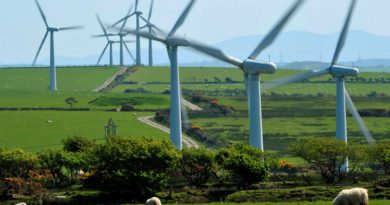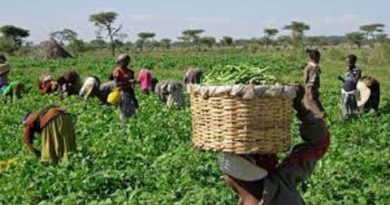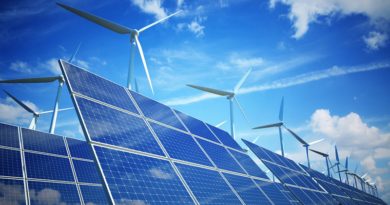Africa to achieve full access to electricity by 2080, new Atlas shows
A new Atlas released on Thursday May 4, 2017 by the United Nations Environment Programme and African Development Bank at the World Economic Forum held in Durban, South Africa has revealed that with the current trends, it will take Africa until 2080 to achieve full access to electricity.
Although energy consumption in Africa is the lowest in the world and per capita consumption has barely changed since 2000, but the current energy production in the continent is insufficient to meet demand.
About a third of the total African population still lacks access to electricity and 53 per cent of the population depends on biomass for cooking, space heating and drying. A kettle boiled twice by a family in the United Kingdom uses five times as much electricity as a Malian uses in a year.
Prepared in cooperation with the Environment Pulse Institute, United States Geological Survey and George Mason University, the Atlas consolidates the information on the energy landscape in Africa. It provides information in the form of detailed ‘before and after’ images, charts, maps and other satellite data from 54 countries through visuals detailing the challenges and opportunities in providing Africa’s population with access to reliable, affordable and modern energy services.
“The Atlas makes a strong case that investments in green energy infrastructure can bolster Africa’s economic development and bring it closer to achieving the Sustainable Development Goals. It is therefore an important policy guide for African governments as they strive to catalyze national development by making use of their energy resources,” said Juliette Biao Koudenoukpo, Director and Regional Representative, UN Environment, Africa Office.
The Atlas shows both the potential and the fragility of the continent’s energy resources which are at the heart of Africa’s socio-economic development. It highlights some success stories of sustainable energy development around the continent, but it also puts the spotlight on major environmental challenges associated with energy infrastructure development.
“This Atlas will be instrumental to ease access to information and data in the energy sector for all stakeholders, including the donor community, African governments and the private sector,” said Amadou Hott, Vice-President in charge of power, energy, climate and green growth, African Development Bank.
Reserves of coal, natural gas and oil represent 3.6 per cent, 7.5 per cent and 7.6 per cent of global reserves respectively. A growing population, sustained industrialization and rising urbanization mean that energy demand in Africa is increasing. Only an insignificant fraction of the existing energy potential has been tapped into—leaving the continent lagging behind in the production and manufacturing sectors due to low and unreliable access to energy.
Main findings and key concerns in the Atlas
Africa has the world’s lowest per capita energy consumption: with 16 per cent of the world’s population (1.18 billion people out of 7.35 billion) it consumes about 3.3 per cent of global primary energy.
With current trends, it will take Africa until 2080 to achieve full access to electricity.
Of all energy sources, Africa consumes most oil (42 per cent of its total energy consumption) followed by gas (28 per cent), coal (22 per cent), hydro (6 per cent), renewable energy (1 per cent) and nuclear (1 per cent).
South Africa is the world’s seventh largest coal producer and accounts for 94 per cent of Africa’s coal production.
Africa’s renewable energy resources are diverse, unevenly distributed and enormous in quantity — almost unlimited solar potential (10 TW), abundant hydro (350 GW), wind (110 GW) and geothermal energy sources (15 GW).
Nearly 60 per cent of refrigerators used in health clinics in Africa have unreliable electricity, compromising the safe storage of vaccines and medicines; half of vaccines are ruined due to lack of refrigeration.
Energy from biomass accounts for more than 30 per cent of the energy consumed in Africa and more than 80 per cent in many sub-Saharan African countries. Indoor pollution from biomass cooking — a task usually carried out by women — will soon kill more people than malaria and HIV/AIDS combined.
Sub-Saharan Africa has undiscovered, but technically recoverable, energy resources estimated at about 115.34 billion barrels of oil and 21.05 trillion cubic metres of gas.
More women than men suffer from energy poverty
The Atlas of Africa Energy Resources features over 64 maps and 73 satellite images as well as some 50 graphics and hundreds of compelling photos. The Atlas makes a major contribution to the state of knowledge on energy sector in Africa by highlighting the opportunities and challenges for sustainable development of the energy resources on the continent.




